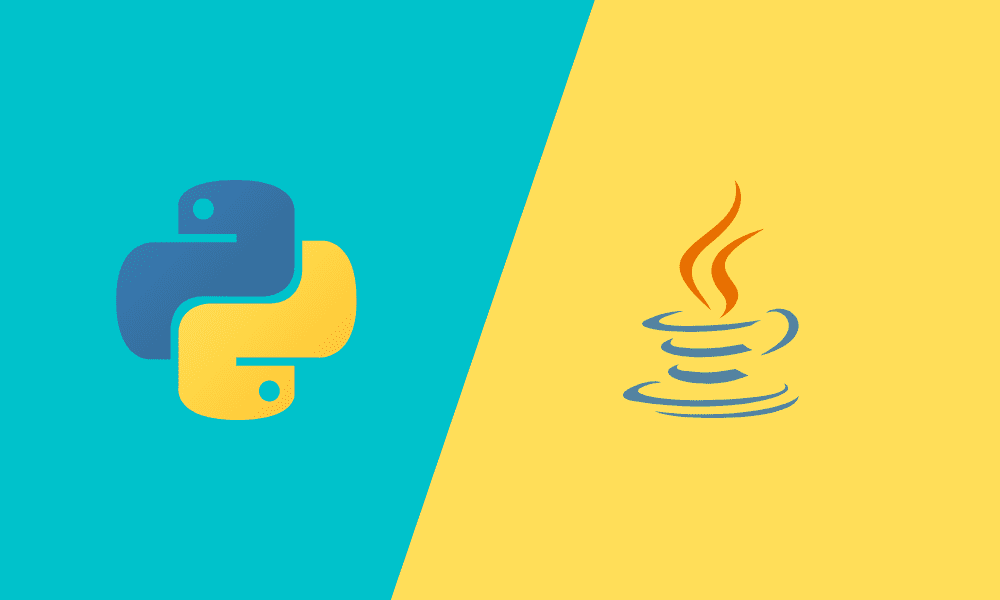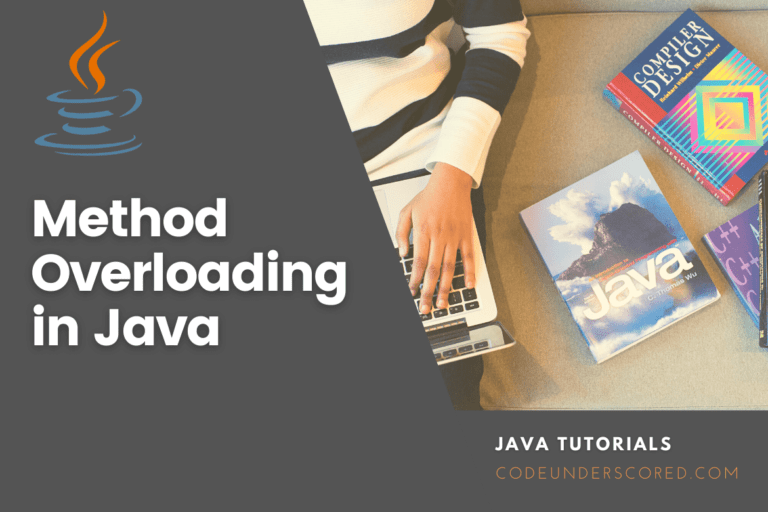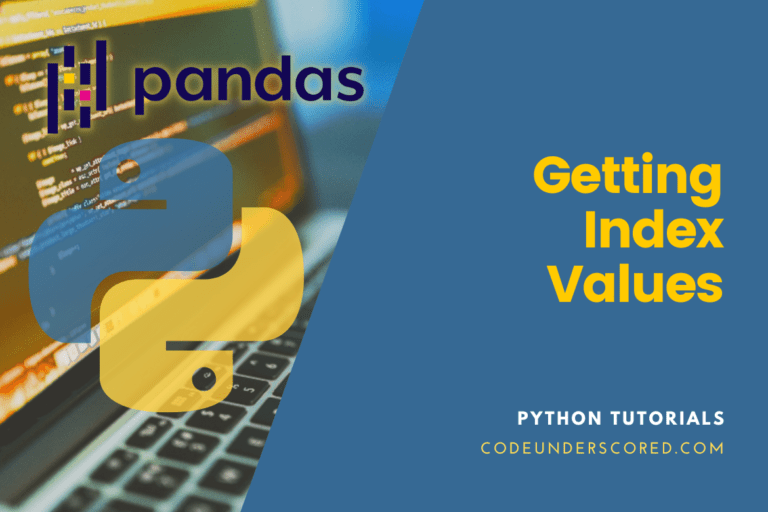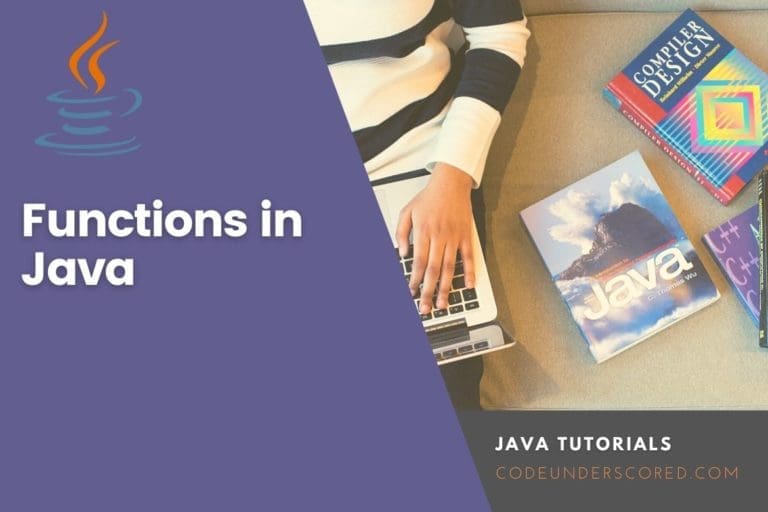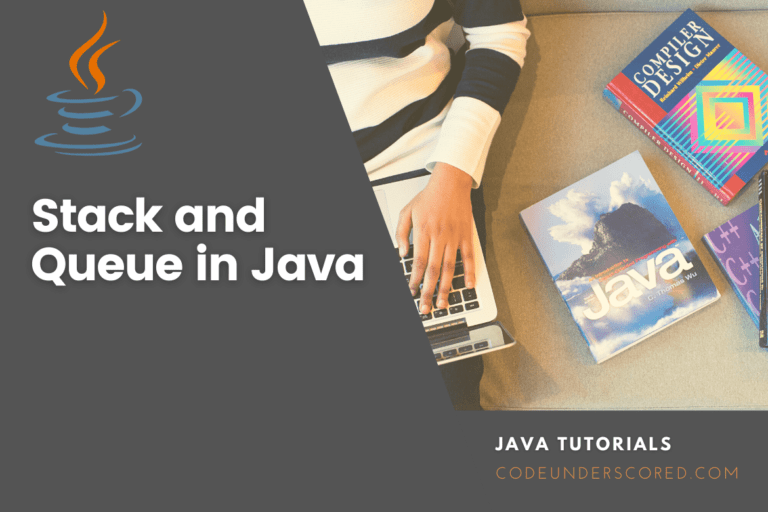Python and Java are two among the famous languages for programming- they are both excellent and widely used. Despite their differences, they are both notable for their vast libraries and robust cross-platform support. They do, however, excel in a variety of applications.
It’s crucial to understand the fundamental distinctions before deciding which programming language is best (if there is one). As a result, this article will evaluate both languages based on their popularity, syntax, applications, stability, speed, performance, and ease of learning! Furthermore, to thoroughly comprehend how Python and Java differ from one another, we will show code examples from both languages.
Python was released for the first time in 1991. Guido van Rossum created it at the Netherlands’ National Research Institute for Mathematics and Computer Science.
This dynamically typed programming language was created to be versatile and readable. Python is dynamically typed, which means it performs type checking at run-time. Python is one of the most popular programming languages due to its ease of use, and it is frequently compared to Perl, Ruby, and, of course, Java.
Python is another open-source software. In addition, it is a solid and easy-to-understand object-oriented programming language. All OS’s, including macOS, Unix, Windows, and Linux, are supported. Because Python is available under the GNU General Public License, users can download and use it for free, and the language can also be freely redistributed and modified (GPL).
Java was created by James Gosling at Sun Microsystems (later acquired by Oracle) and launched in 1995. It’s also a statically typed general-purpose, object-oriented programming language (perform type checking at compile time). In addition, Java was designed to be WORA (write once, run anywhere).
Java is compiled into bytecode, executing on any Java Virtual Machine (JVM). As a result, this language is platform agnostic, as it does not require compilation into a specific platform machine. Java’s syntax is comparable to those of C++ and C, but it has fewer low-level features.
Python vs. Java: Applications
Both Python and Java may be used to communicate with APIs and for Machine Learning. On the one hand, Java is frequently used for commercial applications; on the flip side, Python is ideal for scientific and numerical computation.
Java is a well-known and widely utilized web development language, particularly among senior engineers. Java is an excellent choice for Desktop GUI applications, Enterprise Solutions, Embedded Systems, and online application services, in addition to asynchronous programming. It also has a supportive Natural Language Process community.
On the other hand, Python is well-known for its excellent data processing libraries (such as Dask and Pandas) and data visualization tools (such as Matplotlib). As a result, it is frequently utilized by those interested in data science and younger developers. Python has strong machine learning libraries, such as PyTorch and TensorFlow, which are built-in Python.
In reality, when it comes to Machine Learning, Python is typically thought to be a better choice because it is syntactically simple and has an extensive library package and resources. However, due to its ease of debugging and ability to handle large-scale operations and enterprise systems, Java is an appealing alternative for some when it comes to Machine Learning. Developers can also use Java to work with Weka, Deeplearning4j, and other tools.
What exactly is Java?
Java is a programming language that is multi-platform, object-oriented, and network-centric. It’s one of the many famous programming languages. It was first released by Sun Microsystem in 1995 and is also used as a computing platform. Oracle Corporation later purchased it.
What exactly is Python?

Python is an object-oriented programming language with a high level of abstraction. It has built-in data structures and dynamic binding and typing, making it an excellent choice for rapid application development. Modules and packages are also supported by Python, allowing for system modularity and code reuse.
Because it just only a few lines of code, it is one of the fastest programming languages. It focuses on readability and simplicity, making it an excellent alternative for newcomers.
Why choose Java?
- Java lets you create standard programs and reusable code by utilizing a vast pool of tested developers code and a large number of third-party libraries
- It’s a multi-threaded environment that allows you to run multiple programs at the same time
Why do you need Python?
- It has excellent performance and easy-to-use libraries
- In comparison to Java, C, and C++, the syntax is straightforward
- They are used in the fields of Machine Learning, Deep Learning, and AI in general. Very handy for data display and analysis
- Python has its auto-installed shell and offers an extensive library and practical tools for developers. Code in Python is both easy to write and troubleshoot when compared to other languages’ code. As a result, maintaining its source code is relatively simple
- Python is a portable language that can run on many platforms and operating systems
- Python comes with a plethora of pre-built libraries, making development a breeze
- Python makes sophisticated programming easier to understand. Garbage collection is necessary since it works with memory addresses internally
- Python includes an interactive shell that allows you to test your ideas before putting them into practice
- Python has database interfaces for all of the major commercial database management systems
- Python is well-known for its application in the Internet of Things because it supports imperative and functional programming
History of Java and Python
Here are some key dates in the Java language’s history. The Java language was initially known as OAK. It was initially designed to handle portable devices and set-top boxes. Oak was a colossal flop.
Sun renamed the language “Java” in 1995 and tweaked it to capitalize on the developing www (World Wide Web) development industry.
Oracle Corporation later purchased Sun Microsystems in 2009, gaining control of three core Sun software assets: Java, MySQL, and Solaris.
Python was first conceptualized in the late 1980s, but its implementation did not begin until December 1989. It was created in the Netherlands by Guido van Rossum.
In February 1999, Rossum released the first version of Python (0.9.0), derived from the ABC programming language, a general-purpose programming language.
Python currently has a core development team responsible for maintaining it, though Rossum plays an essential role in its direction.
Features of Java and Python
Java Features
Here are some of Java’s most important features.
- It is designed for creating object-oriented programs and allows you to write code once and run it on nearly any computing platform.
- Because of its network-centric nature, it is a multi-threaded language with automatic memory management.
Python’s Features
Here are some of Python’s most essential features:
- Easy to learn, read, and maintain It can run on various hardware platforms while maintaining the same interface.
- Low-level modules can be loaded into the Python interpreter.
- Python’s structure and support are suited for massive programs.
- Python has built-in support for garbage collection.
- It allows you to test and troubleshoot interactively.
- It allows dynamic type checking and has high-level dynamic data types.
- The Python programming language can be used in conjunction with Java, C, and C++ code.
Key Differences
Java is a compiled+ interpreted language, whereas Python is an interpreted language. Furthermore, Java is statically typed, whereas Python is dynamically typed. As a result, Java has a steep learning curve, whereas Python is simple to pick up. In addition, Java is a multi-platform, object-oriented, and network-centric programming language, whereas Python is a high-level object-oriented programming language.
To read from a file in Java, ten lines of code are required, whereas Python requires two lines of code.
Curly brackets are used in Java to define the start and finish of each function and class definition, whereas indentation is used in Python to divide code into different blocks.
Multiple inheritances in Java are partially accomplished through interfaces, but Python allows for both single and multiple inheritances.
String-related functions in Java are limited, whereas string-related functions in Python are plentiful.
Python programs require an interpreter installed on the target machine to translate Python code. In contrast, Java programs can run on any computer or mobile device to run the Java virtual machine (JVM).
Python has lower portability than Java.
Python is better for scientific and quantitative computing, Machine learning apps, and more, whereas Java is best for Desktop GUI programs, Embed Systems, and Web application services.
Python has a weak connection, whereas Java has a stable connection.
Here are the primary differences between Java and Python
| Parameter | Python | Java |
| Static or Dynamic | Python is dynamically typed | Java is statically typed |
| Compilation | Python is an Interpreted Language | Java is a Compiled Language |
| String operations | It offers lots of string-related functions | String operations Offers limited string-related functions |
| Multiple inheritances | There is the prevalence of multiple and single inheritances. | Multiple inheritances are partly accomplished through interfaces |
| Learning curve | Easy to learn and use | Complex learning curve |
| Braces vs. Indentation | Code blocks are a result of indentation | Class and function definitions are marked by a starting and ending curly brace |
| Portability | It is less portable because the interpreter has to be installed for a program to run on any machine. | Any computer or mobile device which is capable of successfully running a JVM can run any Java app. |
| Speed | Python programs run faster than Java | Java program runs slowly compared to Python |
| Read file | Two lines or less in Python code can get the work done | Reading a file will need many lines in Java code |
| Backend Frameworks | Flask, bottle, and Django | Spring, Spring Boot & Blade |
| Architecture | The Interpreter in Python is responsible for source code translation to bytecode that is independent of the machine. | Java Virtual Machine provides the run-time environment that is responsible for code execution and conversion and converting bytecode to machine language. |
| Game Development Engines | Cocos. Panda3d | JMonkeyEngine |
| Famous companies using this technology | Uber Technologies, Dropbox, Google. | Airbnb, Netflix, Spotify, Instagram. |
| Machine Learning Libraries | Tensorflow, Pytorch | Weka, Mallet, Deeplearning4j, MOA |
| Best features | Easy to read code Development is rapid Beautiful code | A considerable amount of documentation is available Great libraries Widely used Excellent tooling |
| Database support | Connectivity in Python is weak | Connectivity in Java is stable |
| Best use for | Python is ideal for machine learning and both numeric and scientific computing | It is suitable for apps with a desktop GUI, Web app services, and embedded systems. |
| Code example | Print(“Codeunderscored”) | class A { public static void main(String args[]){ System.out.println(“Codeunderscored”); } } |
Interpreted vs. Compiled languages
Python is a language that is interpreted. The latter means it can instantaneously translate human-readable code into machine-readable code, making it easier to debug and evaluate.
Java is a compiled computer programming language. Before running source code, compiled languages convert it to machine code.
Syntax
Python is a dynamically typed language when Java is statically typed, as previously stated. It is the most crucial distinction between these object-oriented languages since it affects how programmers write, design, and troubleshoot code.
While typing in Python, the developer does not need to enter variables because they are entered during the run-time, making Python a straightforward and primary language. The ease with which Python can be typed also makes it very easy to read. Another advantage of Python is that it does not require surrounding brackets, and code blocks are structured according to indentation, making it user-friendly and straightforward.
# Variable declaration x, y = 5, 13 is_true = True company = "Codeunderscored!"
On the other hand, Java requires the developer to fill in all variables and follows strict grammar standards. If there is an error in the code, the software will not run, which may be highly irritating and demotivating, especially for beginners. For example, while reading from a file in Java requires ten lines of code, reading from a file in Python requires two lines of code.
public class Main {
public static void main(String[] args) {
// Declaring variables
int x = 5, y = 13;
boolean is_true = true;
String company = "Codeunderscored!";
}
}In Java, to create and specify a method or a block, unlike Python (which provides indentation for creating blocks with numerous lines), the lines must be inserted inside curly brackets.
Consider the following comparisons of Python and Java in terms of similar functions:
- define a class with a constructor and a method:
In Python:
# Handling Lists
cars = [
"Toyota",
"Nissan",
"Mercedes",
"Ford",
"Peugot"
]
new_numbers = [5, 18, 3, 7, 29]
# List sorting
cars.sort()
# Looping a List
for car in cars:
print(car)In Java:
import java.util.Arrays;
public class Main {
public static void main(String[] args) {
// Arrays and their Use
String[] cars = {
"Toyota",
"Nissan",
"Mercedes",
"Ford",
"Peugot"
};
int[] new_numbers = {5, 18, 3, 7, 29};
// Array sorting in ascending order
// first, import java.util.Arrays
Arrays.sort(cars);
// Arrat Looping
for (String car : cars) {
System.out.println(car);
}
}
}- Class definition with constructor and a method
In Python:
# Defininition of a class alongside a constructor and a method in Python
class Employee:
def __init__(self, first_name, department, position, work_experience):
self. first_name = first_name
self. department = department
self. position = position
self. work_experience = work_experience
# use if/else conditional statement to establish if an employee is senior or not and return a boolean
def isSeniorEmployee(self):
if self. work_experience >= 7:
return True
else:
return FalseIn Java:
// Class with constructor definition and a method
public class Employee {
String first_name;
String department;
String position;
int work_experience;
public Employee(String first_name, String department,String position, int work_experience) {
this.first_name = first_name;
this.department = department;
this.work_experience = work_experience;
}
public boolean isSeniorEmployee() {
if (this. work_experience >= 7) {
return false;
}
else {
return true;
}
}
}- Instantiation of an Object from class Employee
In Python:
# Instantiate an Object from class Employee
employee = Employee("Sam Joe","IT","Manager", 24)
print(employee. isSeniorEmployee())In Java:
// Instantiation of an Object from class Employee
Employee employee = new Employee("Sam Joe","IT","Manager", 24);
System.out.println(employee. isSeniorEmployee());Java is a cross-platform language because it compiles bytecode and runs it in virtual machines. In addition, Java compiles code ahead of time and distributes the bytecode, whereas Python compiles code at run-time.
Performance
The compilation is faster and easier using Java’s static-typing syntax than with Python’s dynamic typing. In addition, despite the shortcomings noted above, the static-typing syntax is less prone to errors and is more stringent for the target platform, resulting in better code compilation.
In addition, Java includes a JIT (Just-in-Time) compiler. This allows bytecode to be turned into native machine code, allowing the produced code to be directly called. What’s the result? A more rapid performance.
Python does code processing during the compilation process (which is when variables are considered). When code is written in a dynamically typed syntax, it is less adaptable to other platforms in terms of compilation. Furthermore, as previously indicated, Python tests the syntax during run-time, which means it can put the entire application on pause if a software error arises. As a result, each of these characteristics can contribute to a decrease in language speed and efficiency.
Stability
Stability Unlike Python, Java demands the developer to follow rigorous grammar guidelines and include all variables while writing code. As a result, there is more code to review and fix. However, there is a bright side to this! Because everything must be checked and verified before running, the code must be well-written, and the software may be more stable and less prone to crashes as a result.
Java is frequently connected with traditional corporate languages. As a result, Java is frequently seen as the finest choice for businesses such as banks. Python, in contrast, has proven to be capable of large-scale handling software.
The fact that Java has a high level of software stability does not imply that Python is. Big firms, such as Android, Docker, and Airbnb, use Java in their software stacks. However, Reddit and even Instagram (which uses the Django web framework developed in Python) use Python Python as part of their software stack.
Speed
Python development is extremely rapid due to the ease, simplicity, and practicality of writing in this language. Therefore, python is most likely the best option while working against time. In terms of development speed, however, we cannot say the same about Java. Java projects take longer to complete and may necessitate larger development teams.
Creating an MVP (Minimum Viable Product) in Python can be very quick (in a couple of weeks), whereas months in Java are more likely.
Disadvantages of Java
Here are the disadvantages/drawbacks of using the Java language:
- JIT compiler makes the program somewhat slow.
- Java has a lot of memory and processing power. As a result, hardware costs rise.
- Low-level programming constructs such as pointers are not supported.
- You have no control over trash collection since Java lacks capabilities like delete() and free() .
Python’s Disadvantages
Here are the disadvantages of utilizing the Python programming language:
- Used on a limited number of platforms.
- Python is slower than its rivals because it is interpreted.
- Scientifically Python is dynamic. Therefore more problems appear at run-time. Underdeveloped and fundamental database access layer absence is the cause of minimal commercial support
Which is better, Java or Python?
Python is an excellent choice for novices since it is a more intuitive and reasonably similar syntax to English. Its open-source nature allows for a flood of new tools to be developed to improve it.
On the other hand, Java is a general-purpose programming language developed by Sun Microsystems -created to allow developers to write code once and have it run anywhere.
The nature and expense of the development project will ultimately determine which language is chosen.
Python is projected to run slower than Java, but it is also expected to require less time to develop. Python programs are usually shorter than equivalent Java programs because of the built-in high-level data type and dynamic typing, making them more accessible and faster to write.
Because Java necessitates more code and everything must be pre-defined, developers will require more time to examine everything and correct any potential flaws. The more the code base there is, the greater the difficulty level of comprehending. Nonetheless, the rigor required to produce good code might result in more stable and robust software.
Finally, the superior programming language is the one that is appropriate for the type of software program that the developer intends to construct. Simply put, Python is slower to run but faster to launch. Java, on the other hand, is slower to start but faster to run. Developers, in theory, would benefit from understanding both languages, as mentioned.
Conclusion
After a thorough examination of programming languages, it should be no surprise that Python and Java are among the most widely used. Python stands out for its ease of use and pragmatism, which makes programming more accessible. On the flip side, Java is a different story to use, but it is incredibly stable and provides a fantastic opportunity for developers to use computer science basics.
Furthermore, Python’s dynamic typing and built-in high-level data types, program code in Python are often shorter than those written in Java. Java, on the other hand, is faster at run-time and easier to debug.
In short, both languages offer so many benefits that they would create an excellent combo!

